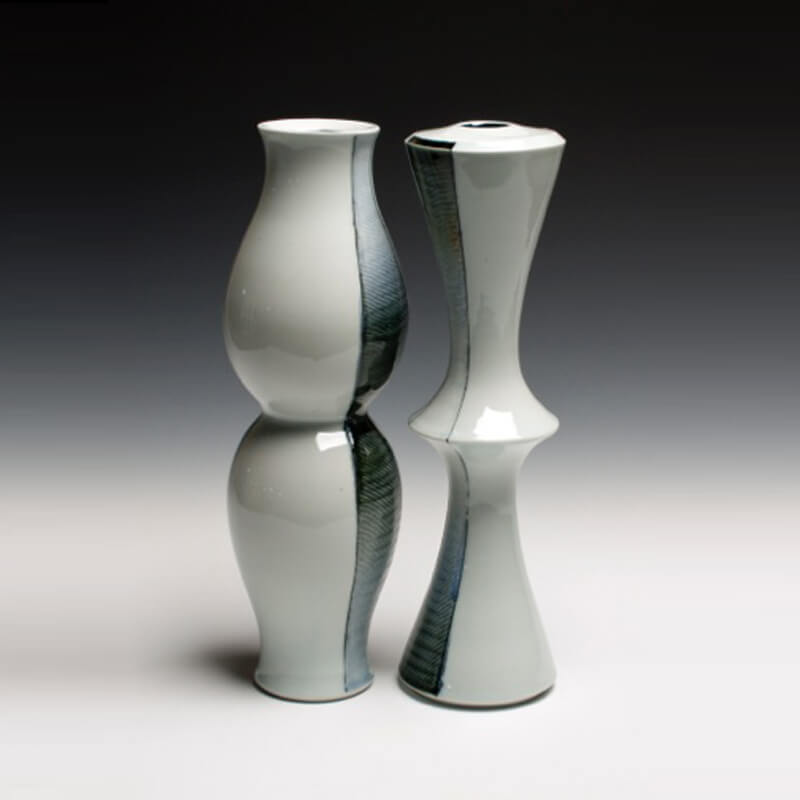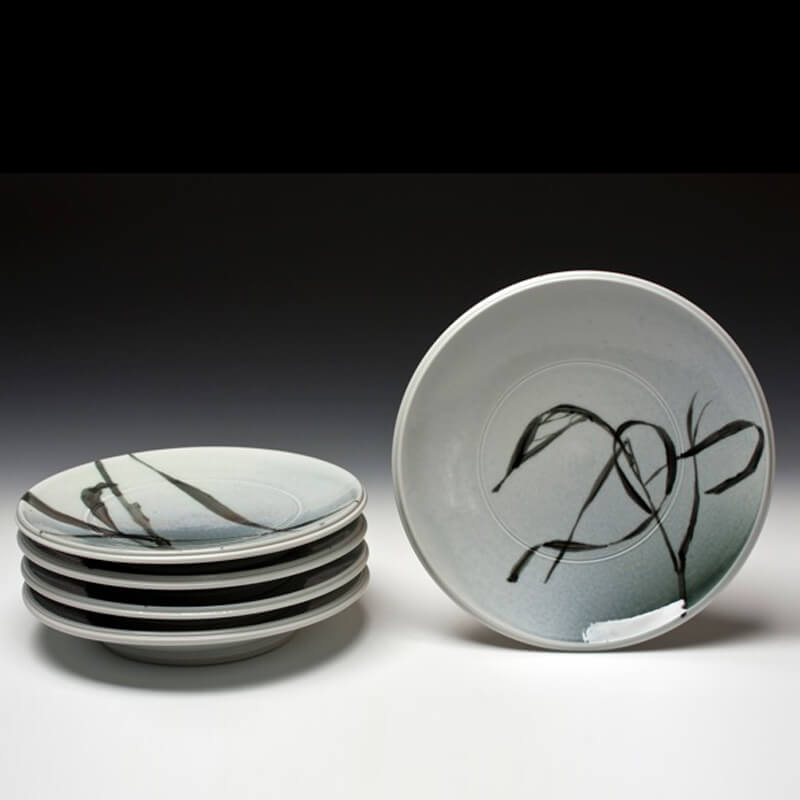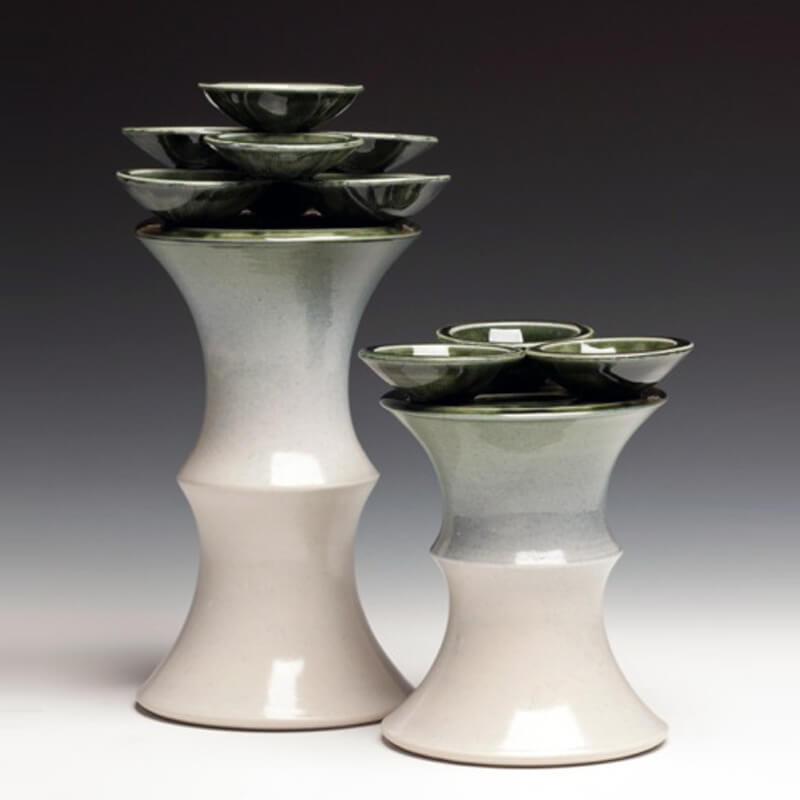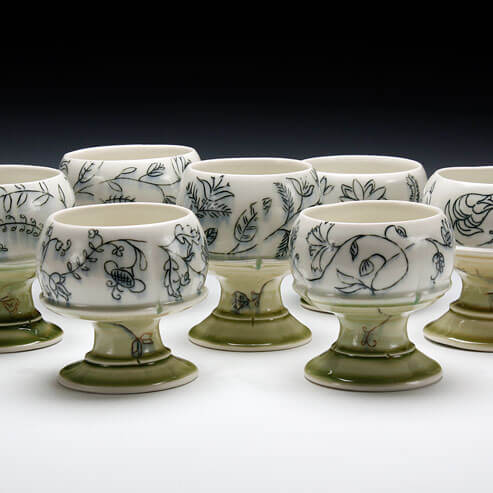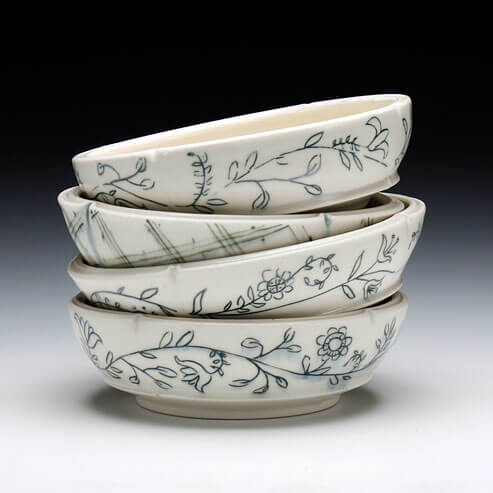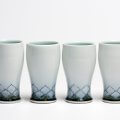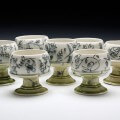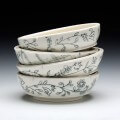
Red Lodge Clay Center Long-Term Resident 2009-10
Kyla Strid was born and raised in Anchorage, Alaska. She started college following in the footsteps of many family members by studying engineering. With encouragement from her grandmother and support from her parents, she changed course (and schools) to study art. Eventually she landed in a ceramics class where she fell in love with making pots because they bring together design, science, and art.
After completing her BFA in Ceramics at the University of Alaska Anchorage she looked outside Alaska to build on her education and professional experiences. She studied at the University of Nebraska- Lincoln and received her MFA from Ohio University. She has been awarded residencies at the Clay Studio of Missoula, Red Lodge Clay Center, Guldagergaard (Denmark), the Lawrence Arts Center, Haystack, and Penland School of Crafts. Kyla gained extensive professional experience working as a studio technician, studio manager, gallery manager, and curator at various institutions across the country.
Currently, Kyla lives in Lawrence, Kansas and is the Director of Residencies and Adult Education at the Lawrence Arts Center. Outside of her ceramic studio, she is an avid gardener, foodie, adventurer, and part time printmaker. And of her many adventures, consulting on the archeological dig of a Minoan Pottery Workshop on the island of Crete has been one of the most meaningful experiences that continues to inform how she approaches making pots.
I strive for a refined simplicity in my handmade pots inspired by everyday occurrences, mostly in the garden and kitchen. My pots exist in the background of daily life and are meant to elevate whatever they are holding—be it wine, food or flowers, utensils, or a pile of clementines.
The rhythms of the day to day are mirrored in the repetitive nature of producing multiple forms with subtle variations. I think of myself as a tinkerer in the studio, adjusting a form here and there when I throw one piece after another. The subtle and individual nuances of each form often are riffs on historical pots I have studied. I like to blend the historical forms with my design sensibilities in much the same way I like to blend glaze colors. They overlap and transition into one another.
My forms are simple and paired down because I find that this often makes them the most versatile in their function. I want them to be open for interpretation. Whoever uses my pots is also an artist in my mind, creating compositions on my plates and cups, within my bowls and vases. By using my pottery, you complete the work I started. As I embed my pots with traces of my hand, I find myself wondering: how will you fill this space I’ve created for you?



